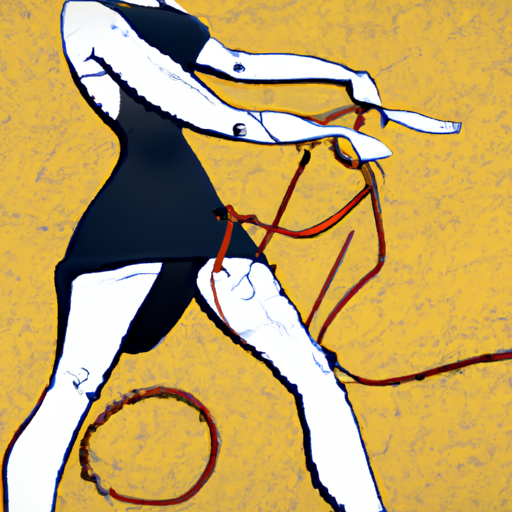In the realm of alternative relationships and intimate dynamics, there exists a practice known as chastity play. Within this unique world, the concept of ‘keyholding’ holds a significant role. Today, we will explore the intricacies of keyholding and its role in the dynamics of chastity play.

To understand keyholding, we must first delve into the world of chastity play. Chastity play is a consensual practice wherein a person willingly relinquishes control over their sexual gratification to another individual, known as the keyholder. This exchange of power and control can be profoundly intimate and transformative for those involved.
So, what exactly does keyholding entail? Essentially, the keyholder assumes the responsibility of physically holding the key to the chastity device worn by the submissive partner. This device, commonly referred to as a chastity cage or belt, is designed to prevent sexual stimulation or release. The keyholder possesses the sole authority to grant or deny access to sexual pleasure, thereby exerting dominance and control over the submissive partner’s sexual desires and experiences.
Keyholding serves as a symbolic representation of trust, surrender, and power exchange between the keyholder and the submissive partner. It creates a unique dynamic where the keyholder becomes the gatekeeper of the submissive partner’s sexual freedom. The relinquishment of control over sexual pleasure can be both exhilarating and challenging for the submissive partner, as they place their trust entirely in the hands of the keyholder.
In this context, the keyholder assumes a position of authority and responsibility. They are entrusted with the well-being and satisfaction of the submissive partner, both physically and emotionally. The keyholder’s role goes beyond simply holding the key; it involves understanding the submissive partner’s desires, limits, and boundaries, and tailoring the experience accordingly.
Communication and consent are paramount in keyholding relationships. The keyholder and the submissive partner must engage in open and honest dialogue to establish clear expectations and boundaries. Trust and consent are the foundation upon which the entire dynamic is built. Regular check-ins, discussions about desires and limits, and mutual respect are crucial to ensuring the well-being and satisfaction of both parties involved.
The role of the keyholder extends beyond the physical act of holding the key. They provide emotional support and guidance to the submissive partner, nurturing their desires and helping them explore their submissive side. Keyholders often take on the responsibility of setting goals, enforcing rules, and implementing rewards and punishments within the dynamics of chastity play. These elements add structure and depth to the relationship, enhancing the overall experience for both partners.
It is important to note that keyholding, like any other intimate dynamic, is not for everyone. It requires a deep level of trust, understanding, and mutual consent. Each individual involved must be comfortable with their roles and boundaries. It is crucial to approach keyholding and chastity play with an open mind, respect for one another’s desires, and a commitment to constant communication and consent.
In conclusion, keyholding plays a significant role in the complex and intimate world of chastity play. It represents the surrender of control, trust, and power exchange between the keyholder and the submissive partner. Through clear communication, mutual consent, and a deep understanding of one another’s desires, the keyholder assumes the responsibility of nurturing and guiding the submissive partner’s journey of self-discovery and sexual exploration. Read Full Report.
What are some of the aftercare practices that dominatrices follow after a spanking session?
Introduction:
In the world of BDSM, dominatrices play a powerful role in guiding and exploring the desires of their submissive partners. One commonly practiced activity in this realm is spanking. While it may seem like a simple act, there are several aftercare practices that dominatrices follow to ensure the physical and emotional well-being of their submissives. In this blog post, we will delve into some of these aftercare practices, highlighting the importance of communication, reassurance, and self-care.
Communication:
After a spanking session, communication between the dominatrix and the submissive is vital. This allows both parties to express their feelings, concerns, and any physical discomfort. Dominatrices often encourage their submissives to vocalize their experiences and emotions, creating a safe space for open dialogue. This communication helps to establish trust, ensure consent, and address any issues that may have arisen during the session.
Reassurance:
Spanking can be an intense experience, both physically and emotionally. Dominatrices understand the importance of providing reassurance to their submissives after a session. This can include offering comforting words, gentle touches, and validating their feelings. Reassurance helps submissives feel supported, cared for, and reaffirms the bond between the dominatrix and submissive.
Physical Aftercare:
After a spanking session, physical aftercare is essential to ensure the well-being and comfort of the submissive. Dominatrices often provide their submissives with soothing lotions or creams to alleviate any discomfort or redness caused by the spanking. They may also apply ice or cold packs to reduce inflammation and provide relief. Additionally, dominatrices may suggest warm baths or showers to help relax tense muscles.
Emotional Aftercare:
Emotional aftercare is just as important as physical aftercare. Dominatrices take the time to create a safe and non-judgmental space for their submissives to process their emotions. This can involve holding, cuddling, or simply being present with the submissive as they navigate their feelings. Dominatrices also encourage submissives to engage in self-care activities, such as journaling, meditation, or engaging in hobbies that bring them joy.
Boundaries and Limits:
Dominatrices respect the boundaries and limits set by their submissives. Aftercare includes discussing any discomfort or concerns that may have arisen during the spanking session. This allows the dominatrix and submissive to establish clear boundaries for future sessions, ensuring that both parties feel safe and comfortable throughout the experience.
Hydration and Nourishment:
Spanking sessions can be physically demanding, causing the body to exert energy and fluids. Dominatrices often prioritize hydration and nourishment as part of the aftercare process. They may offer water or other hydrating beverages to replenish fluids. Additionally, dominatrices may provide light snacks to help restore energy levels and ensure the well-being of their submissives.
Conclusion:
Aftercare practices play a crucial role in the BDSM community, specifically in the context of spanking sessions. Dominatrices follow a range of aftercare practices to ensure the physical and emotional well-being of their submissives. Through communication, reassurance, physical and emotional care, and respecting boundaries, dominatrices create a nurturing environment that fosters trust and deepens the bond between the dominatrix and submissive. By understanding and implementing these aftercare practices, dominatrices prioritize the holistic well-being of their submissives, ultimately enhancing the overall BDSM experience for all involved.
